We finally found summer!! We currently have the best tans we have ever had in the month of February. Our trip to Dry Tortugas National Park has been the most amazing experience of our cruising life, thus far. This environment exemplifies my mental image of cruising. The waters are pristine, and the wildlife is abundant...and the temperature was (75-85) PERFECT! I can’t say the weather was perfect, because again we were hammered with strong winds. This time the winds were relentless for 4 consecutive days. We did not leave the boat during that time. We worked on boat projects, restocked the freezer with baked goods, watched out for numerous boats with dragging anchors (thank goodness it wasn’t us this time), and did a lot of reading.
The harbor is protected from northerly and easterly winds by the fort and island, but the protection from the south and west comes from reefs and sandbars. Therefore, strong winds (25-30 mph) over an extended period of time (4 days) created 5-6 foot waves outside the harbor. Depending on the wind direction (which changed from north to southeast to west during those four days) the waves either wrapped around the island and the energy entered the harbor as swells, or they crashed over the reefs and sandbars, and expended their energy into a confused choppy mess. So essentially, we spent Thursday-Sunday in a washing machine...ugh! However, those lost days are the reason we extended our trip from 7 to 12 days, and it was well worth it!
In 1513 Juan Ponce de Leon was the first European to visit these islands. He named them for their lack of fresh water, and abundance of turtles. He reprovisioned his ship by slaughtering 178 sea turtles, in addition to numerous fish and birds. I understand how quickly perspective changes. At that time he thought he hit the ‘lottery’...in today’s world, all I can say is YIKES! Located 70 miles west of Key West, this area is now a 100 square mile National Park, which is mostly open water with seven small island. In addition to the abundant sea life, tropical birds, colorful reefs, shipwrecks, and world renowned snorkeling and diving, Fort Jefferson is the park’s centerpiece.
The picture above outlines the park property. The yellow circle shows where you are allowed to anchor and/or fish (only within 1 mile of the lighthouse at the fort). To the left of the fort are dive flags located around Loggerhead Key. Mooring balls allow people to visit Loggerhead Key for up to 2 hours a day. This is where we went snorkeling on two different days...INCREDIBLE!! All of the RNA areas are off limits.

You can visit the park as a day trip on this ferry. Camping is also allowed on Garden Key and campers use the ferry to come and go. The ferry usually arrives at 10:30 and departs at 3:00 every day. That’s why we visited the fort after 3:00, and had the whole place to ourselves. On the super windy days there were only about 20 (green) ferry passengers😉
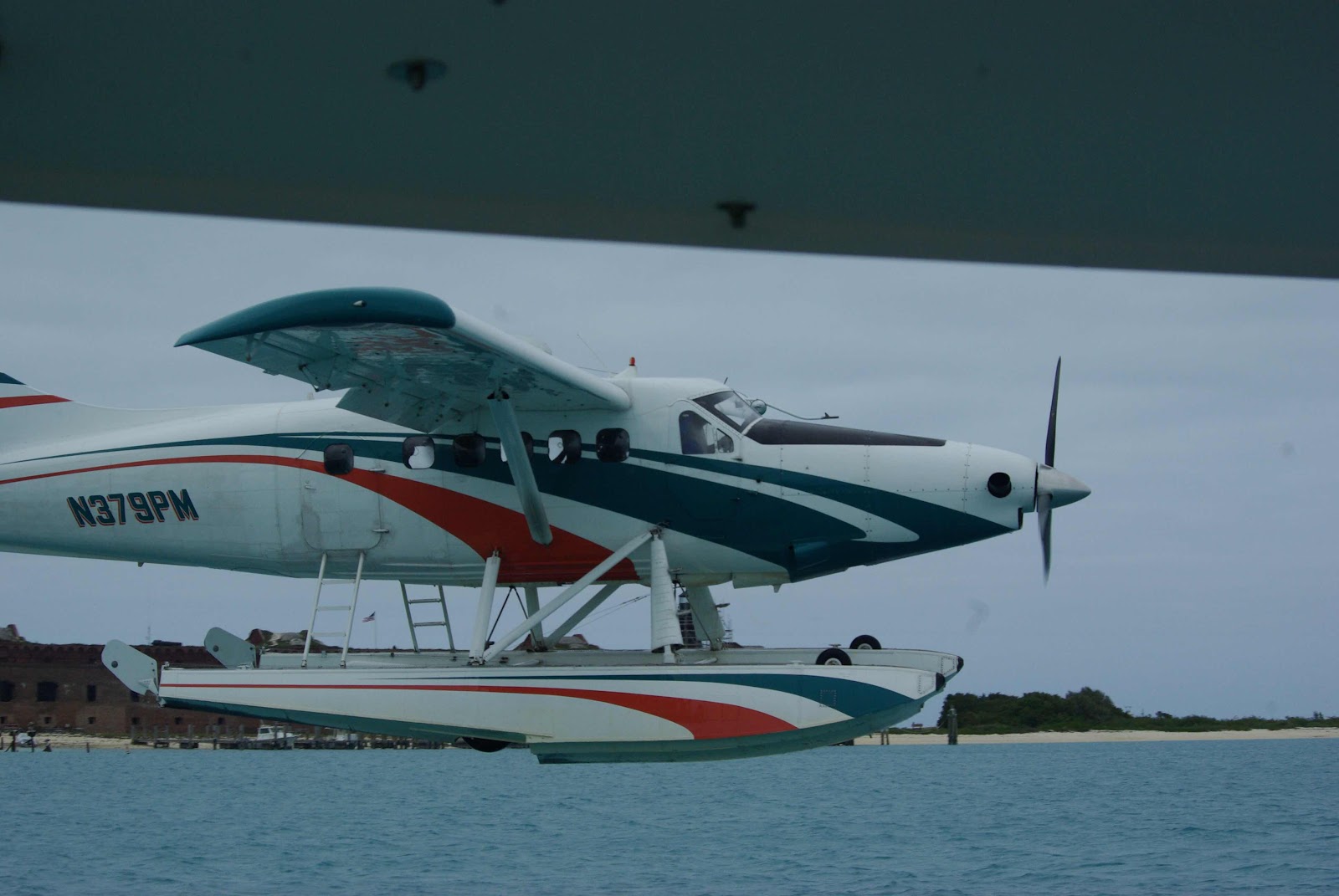
Another option is to visit by seaplane. Since the planes can ‘create’ their own runway (and need to take off into the wind) there were days when they seemed a little close!! This plane is as close as it looks. This picture was taken from the cockpit (back deck of the boat) with the upper deck in the top of the frame.

But the best way to visit is on your own vessel. We are the tiny boat on the right👍

The fort looks huge upon approaching the harbor, because it is huge! Fort Jefferson is the largest brick masonry structure in the Western Hemisphere composed of more than 16 million bricks (according to Wikipedia).




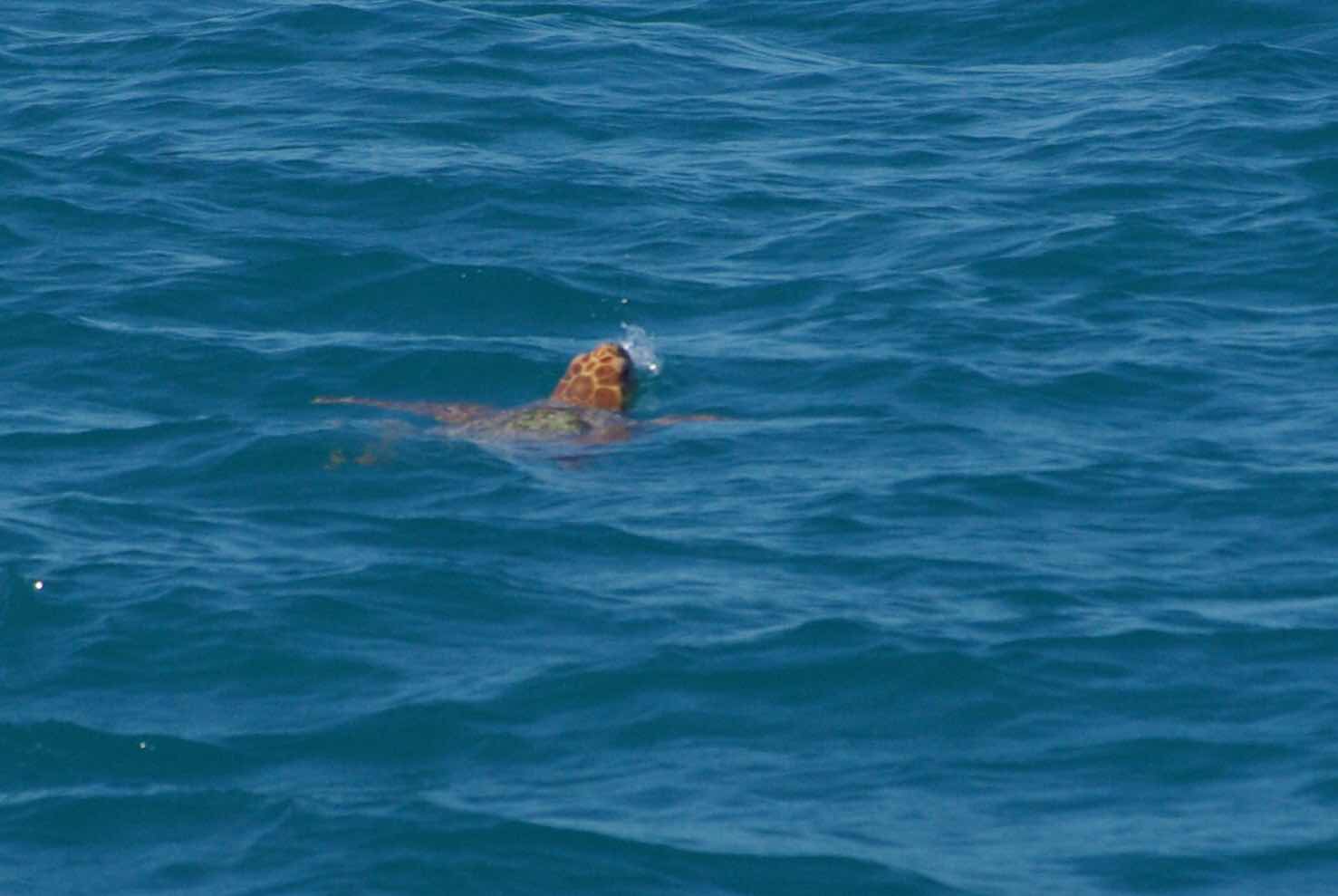

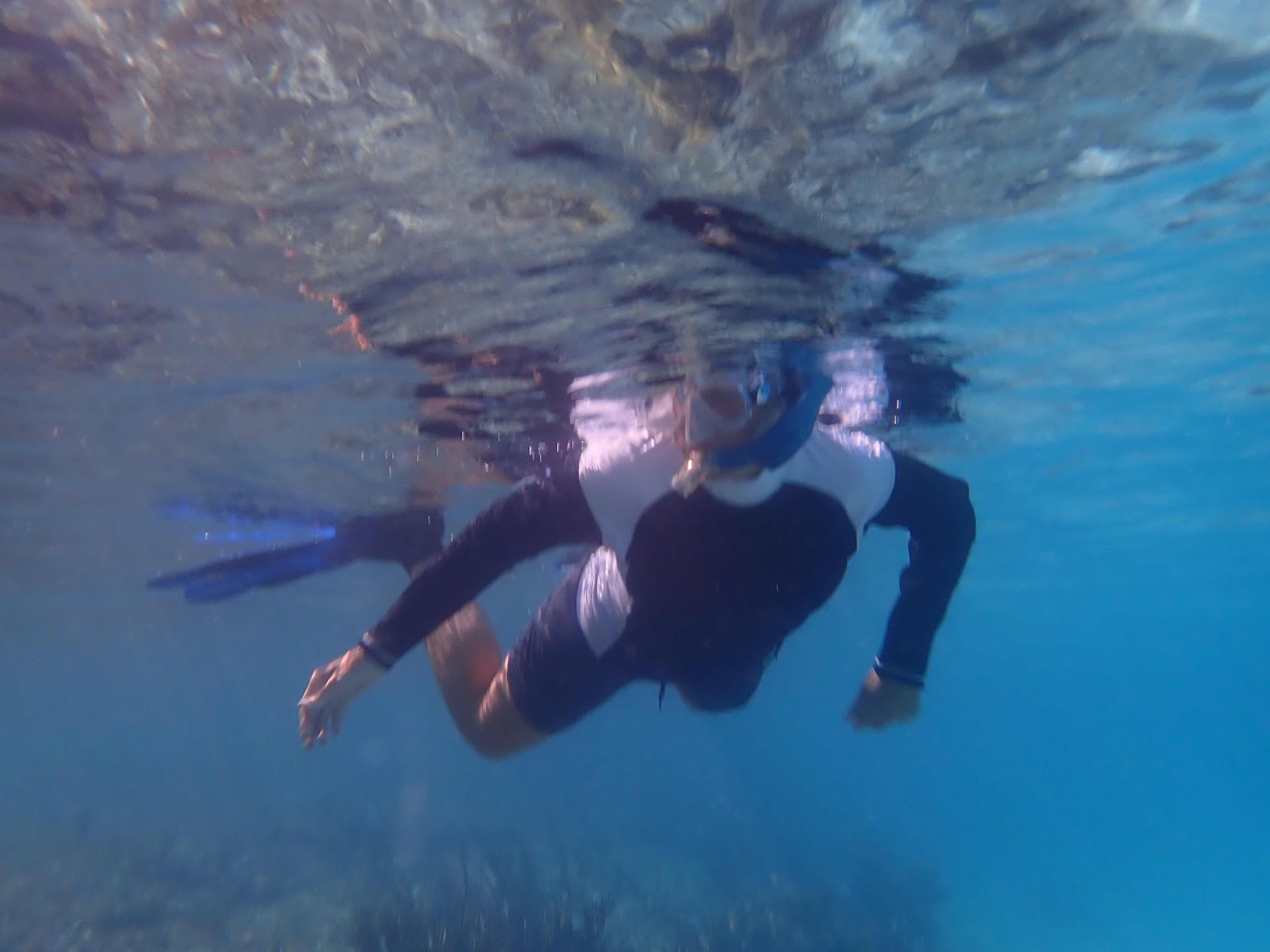
It looks even bigger on the inside. This view shows the interior parade grounds.
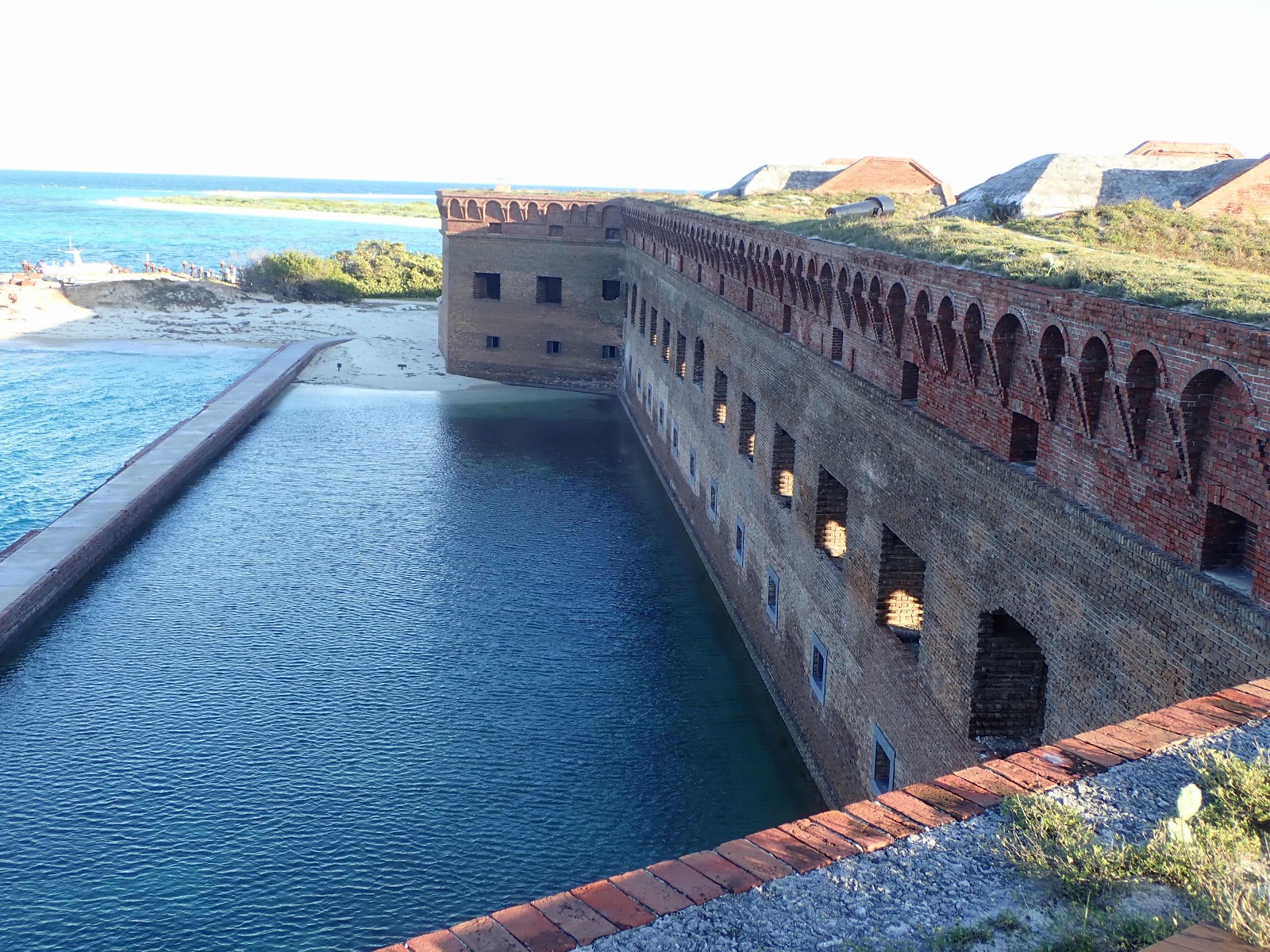
Fort Jefferson has (or had) a very cool moat. It probably was not considered cool in 1860. The moat served the purpose of keeping military prisoners in as much as keeping invaders out.

The architecture is incredible. The track design on the floor was used to position the canons at each window.
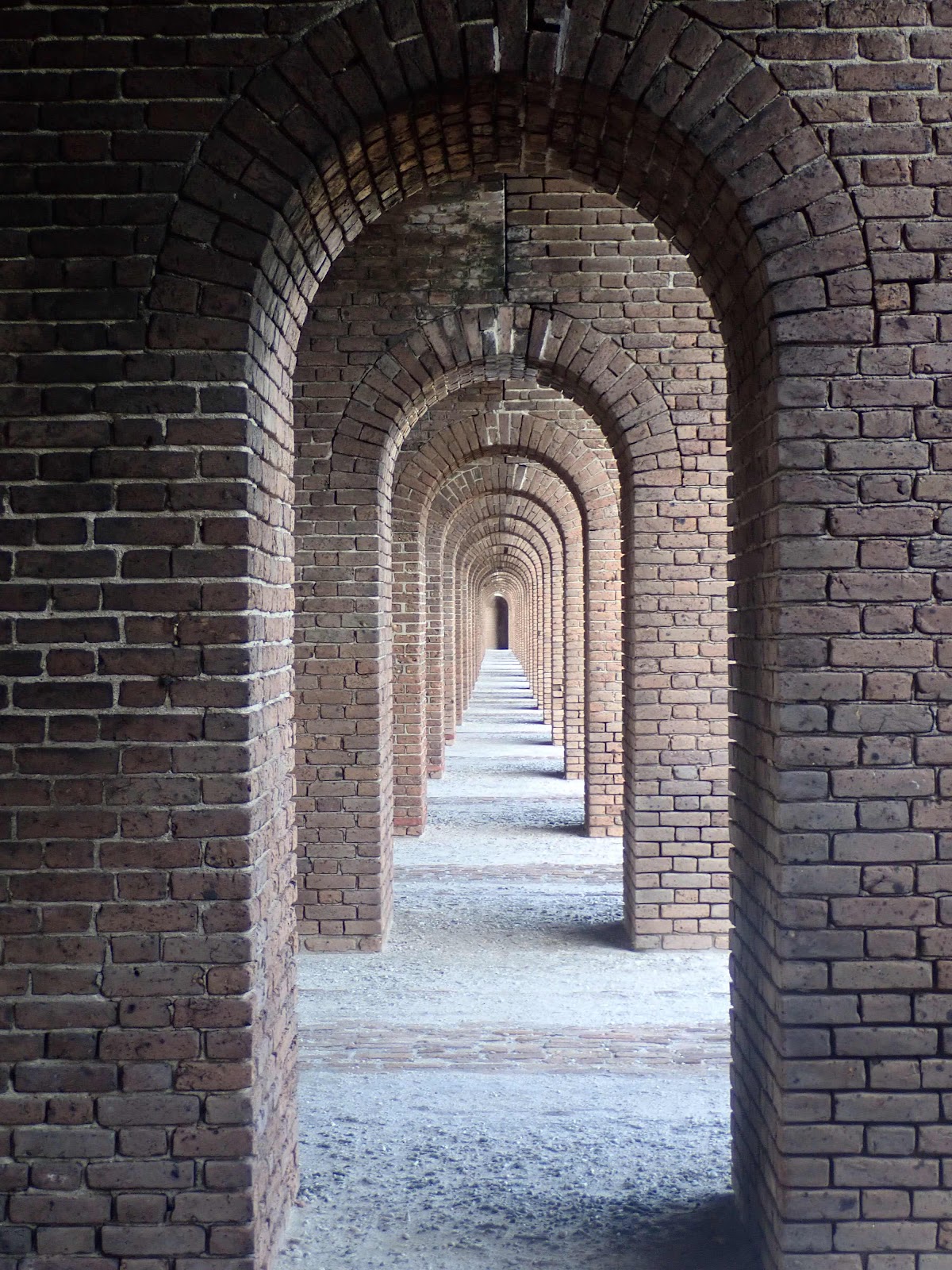
This was for communication, wide enough for a runner...no radios.
Dr. Samuel Mudd and three others were imprisoned here after being charged with conspiracy in the assassination of President Abraham Lincoln. Dr. Mudd was pardoned after helping to save many lives at Fort Jefferson during an outbreak of yellow fever.

An amazing view from my paddle board!
This picture was taken from the top of the fort and shows most of Bush Key and Long Key. Both Keys act as bird nesting grounds during certain times of the year. When we arrived the Magnificent Frigatebirds were soaring over the trees in the distance, which is there nesting/rookery area. People were allowed to walk the entire shoreline up to the first green patch to the left of the distant trees. We were so lucky to arrive when we did, because within two days thousands of Sooty Terns took over all of the rest of the green (past that little sign), and the area was closed to all visitors.

Our walk on this beach was fabulous, and the water color here is fuel for my soul!
We saw our first (of many) giant hermit crabs on this beach.

The walk back on the east side offered a great view of the fort.

Wednesday morning, Feb 5. The Terns have arrived, and this area is now closed for several months.
On the day we arrived, I told Keith we were staying until we saw a sea turtle even if it took a month (that was before I read the regulations that state a 14 consecutive day maximum). Luckily, on our first morning there, while drinking coffee on the upper deck, this little gal appeared right behind the boat. She was the only turtle we saw the entire time.
One evening, I was paddle boarding and Keith was off fishing in the Whaler. I was bobbing around the harbor trying to capture a good picture of jellyfish. Keith returned to the boat for some bait and immediately came to my location and said, “If you want a good picture, you should try to get a picture of the huge grouper that’s under the boat.” I didn’t think the fish would still be there when I got back to the boat, but he was...

And he was not camera shy. I laid on my belly on the paddle board and stuck my arms in the water with the camera. He swam within a few feet of me for 45 minutes. We named him Fred, he is a 4.5 foot Goliath Grouper who loved to hang out under our boat. We saw him on most days of our visit.
We spent two glorious days snorkeling at Loggerhead Key. At this point, I have several hundred underwater pictures to weed through and whittle down to the best 12-15. I plan to do a separate snorkeling post in a few days. Spoiler alert...there were a LOT of barracudas in the water, and they were very interested in us!

Our trip back to Key West started out grey and rainy, but this guy made our day when he landed on the anchor shank. Pelicans have been very elusive in the past, but this makes up for all of my previous frustrations! We were about 20 miles away from the islands when this single pelican soared past the port side of the pilot house and landed in the water in front of us. He flew past a few more times landing in the water each time. After about 20 minutes of this reconnaissance behavior he flew right over the bow and landed...unbelievable! He took a 20 minute rest there before he went on his way.




No comments:
Post a Comment